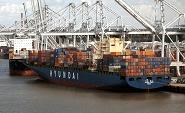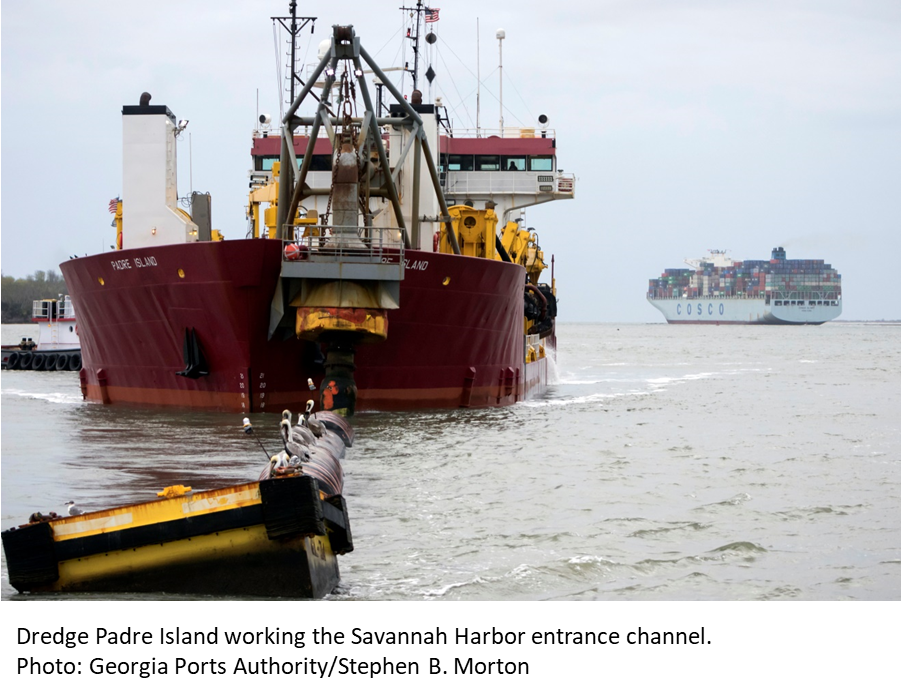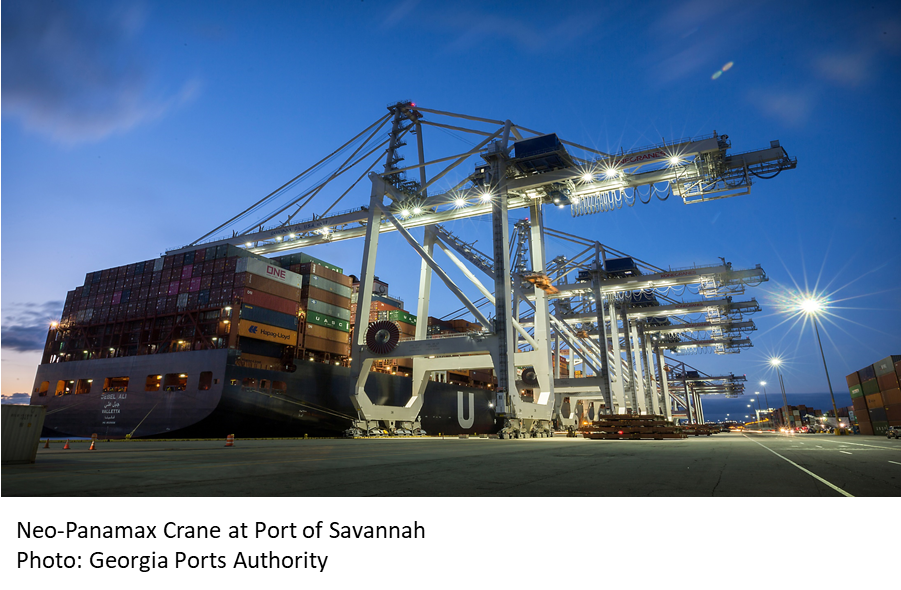Shipping and Logistics

Georgia Ports Authority Expansion is Economic Boon
Written by Sandy Williams
March 29, 2018
The Georgia Ports Authority broke ground on the $126.7 million Mason Mega Rail Terminal on Monday. The new terminal will increase the Port of Savannah’s rail lift capacity to 1 million containers per year.
“Today is a great day for Georgia and the nation,” said Georgia Gov. Nathan Deal. “Not only will this new intermodal facility take trucks off the road and bring our products to market with greater efficiency, but it will open a new corridor for American commerce to and from the Midwest.”
Garden City Terminal is already the South Atlantic region’s busiest intermodal gateway, handling 38 trains per week of import and export cargo. Once the Mason Mega Rail terminal is complete, the Port of Savannah will have a state-of-the-art facility, unique to the U.S. East Coast, say port officials.
When complete, Garden City Terminal will have a total of 180,000 feet of rail, 18 working tracks and the capability of building 10,000-foot unit trains on terminal. This will allow GPA to bring all rail switching onto the terminal, avoiding the use of nearly two dozen rail crossings for improved vehicle traffic flow.
GPA estimates that the new intermodal terminal will take more than 200,000 trucks off the road annually. Rail time from Savannah to the Midwest will be reduced by 24 hours, according to GPA estimates.
The Mason Mega rail project is one of a series designed to make Georgia the transportation and logistics hub of North America. Among the projects under way or planned are the expansion of Savannah Harbor, a new inland terminal in Northwest Georgia, and a $10 billion statewide transportation improvement plan.
The $134 million Savannah Harbor Expansion Projects is about 50 percent completed. The U.S. Army Corps of Engineers finished dredging the entrance channel to the harbor earlier this month, extending the channel seven miles into the Atlantic Ocean.

“Approximately half of the Savannah harbor’s 40-mile channel is deepened and better equipped to handle post-Panamax vessels. The SHEP has broad national impacts, and with this achievement we are now halfway to realizing more than $280 million in net annual benefits for the nation,” said Col. Marvin Griffin, Commander of the Savannah District.
The first of four new Neo-Panamax cranes installed at Garden City Terminal began operation on March 21. The supersized cranes can reach across vessels 22 containers wide. Six more are expected to be installed by 2020, growing the crane fleet to 36. This will allow the port to move approximately 1,300 containers per hour over a single dock. Designed by Konecranes of Finland, the cranes have integral generators that capture enough energy while lowering boxes to power themselves for 18 minutes of every working hour.

The GPA had its busiest February on record, handling 2.9 million tons of cargo (up 1.5 percent) and 341,093 TEUs (up 3.2 percent) over the 28-day period.
For the fiscal year to date (July 2017-February 2018), the GPA has handled 23.1 million tons of cargo, up 1.56 million tons, or 7.3 percent. In containerized trade, the Port of Savannah has moved 2.73 million TEUs, up 212,348 or 8.4 percent.
A recent study released by the Terry College of Business at the University of Georgia found that GPA supports 439,220 full- and part-time jobs across the state, about 9 percent of total state employment. Maritime trade amounts to $44 billion in state gross domestic product, or 8 percent of Georgia’s total GDP, according to the report
“The maritime industry is a crucial component in the overall economic and environmental success of the country,” said Maritime Administrator Rear Adm. Mark H. Buzby. “Investments in our nation’s port infrastructure improve the efficiency and intermodal capabilities of our nation’s ports, allowing the U.S. to remain competitive in the global market.”

Sandy Williams
Read more from Sandy WilliamsLatest in Shipping and Logistics

US Great Lakes iron ore cargoes down notably through May
The Lake Carriers' Association reported a considerable decline in monthly iron ore shipments from US ports on the Great Lakes.

Wittbecker: West Coast port congestion
What's going on in West Coast ports?

Wittbecker: Mexico invests in port capacity despite US tariff troubles
The Mexican government aims to transform Manzanillo into the largest seaport in Latin America, capable of processing some 10 million TEU (20-foot equivalent units) per year by 2030. It is already Mexico's largest port and the third largest in Latin America, handling nearly 4 million 20-foot containers in 2024.

Wittbecker on Aluminum: When do the tariffs reach Main Street?
Containers sailing from China in April are down 15%-20% and Hapag Lloyd says their future bookings transpacific are down 30%.

Wittbecker on Aluminum: US-China trade war clobbers cross-Pacific trade
Container shipping lines have sharply increased blank sailings on Transpacific routes in response to escalating trade tensions between the US and China.

